Cities—their design and how we live in them—will be key in our struggle for sustainability and, indeed, our future. As cities grow, as they are newly created, and as more and more people choose or require them as places to live, our decisions about urban design and city-building will determine the outcomes of long-term challenges related to resilience, sustainability, livability, and justice. Rather than being the essential cause of the global environmental dangers we face, cities will be central to success in overcoming these dangers. Such success will be based on science and policy, but also on widespread public engagement with and understanding of both the challenges and the potential solutions found in building cities. Environmental education can play a critical role in fostering public engagement, through clarifying and transmitting the challenges, values, actions, and methods of sustainable, resilient, livable, and just cities.
What is urban?
At their core, urban spaces are human settlements of various sizes, densities, and physical arrangements. Megacities, cities, towns, and even organized collections of populated zones that comprise metropolitan regions are “urban”—that is, urban comprises a diversity and continuum of types of spaces, not one form. The dense and compact European city is one form, surrounded by rural land. Classic American cities and their sprawl is another model. Garden cities, clustered townships, and other urban forms all have characteristics in common.
Acknowledging that cities are ecosystems in and of themselves, that exist along gradients with surrounding peri-urban and rural areas, has deep implications for the nature of both global sustainability and the essential humanity and livability of the world’s urban zones. Urbanization is advancing throughout the world. Urbanization as a positive concept for the good of the Earth is also advancing around the world among thoughtful scholars, within progressive city leadership, and in the hands of people on the streets who are building better cities, block by block, through community gardens, street tree plantings, parks and embedded natural areas, and participatory decision-making. Telling the story of this advancement is an essential role for an emerging urban environmental education.
The growth of cities
The world is increasingly urban, interconnected, and changing. With current trends, by 2030 the global urban population is estimated to be 4.9 billion, nearly double that of 2000. During this period, the total urban area is expected to triple. That is, urban land area is expanding faster than urban populations (Elmqvist et al., 2013). This massive change in where humans live on the planet will have inevitable local and global ecological consequences.
Indeed, more than 60 percent of 2030’s projected urban area has yet to be built (Elmqvist et al., 2013). In three areas—sub-Saharan Africa, China, and India—the combined urban population is expected to grow by more than 1 billion people. By 2030, nearly one-third of the world’s urban inhabitants will live in China or India (Seto, Güneralp, and Hutyra, 2012). Africa will urbanize faster than any other continent: its urban population is expected to more than double, from 300 million in 2000 to 750 million in 2030. Around 75 percent of Africa’s total population growth is expected to occur in cities of less than 1 million. African cities are often settlements with weak governance structures, high levels of poverty, and low capacity in environmental science. Currently, more than 43 percent of Africa’s urban population lives below the poverty line, more than in any other continent, making socioeconomic development a priority. Generally weak state control, the presence of a feeble formal economic sector, and the scarcity of local professional skills will constrain responses to the complex environmental challenges posed by rapid urbanization. Even under current conditions, urban areas all over the planet are facing severe challenges, including shortages of natural resources; environmental degradation; climate change; demographic and social changes, such as increasing income inequality and poverty; and inconsistent management of sustainability transitions that would reduce ecological impacts.
Climate change, increased migration of people, and ecological degradation will severely test societies and urban regions. However, there are also opportunities in the urbanization process. That 60 percent of 2030s cities are yet to be built is a chance to avoid repeating the city-building mistakes of the past. The infrastructure we build in cities—where we put the roads and the buildings, and how we organize resource use—tends to be with us a long time. The immensity of new building now underway is a chance to get it right, for both people and nature.
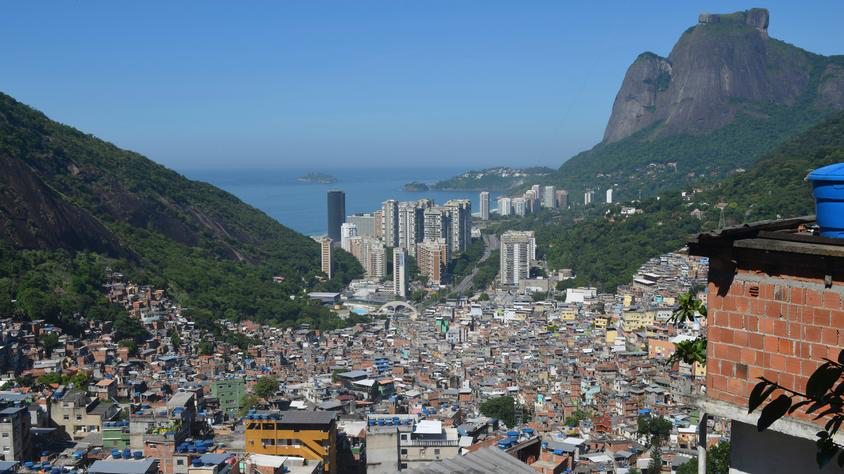
Values
What are the cities we want to create in the future, the cities in which we want to live, that work for both people and the Earth? What is their nature? A vision is needed for city-building, one that is fundamentally built upon goals and informed by values. Visions, goals, and values, along with facts that justify them, are the essence of education, including environmental education.
Certainly, the cities we need are sustainable, since we need our cities to balance consumption and resources so that they can last into the future. Certainly, they are resilient, so our cities are still in existence after the next “100-year storm”, now due every few years. As we build this vision, we know that cities must also be livable, because cities are now the places where most of us live. And justice must also be key to our urban environments. We have struggled with just cities for a long time; largely, we have come up short.
These are the key characteristics of the cities of our dreams: resilient, sustainable, livable, and just. What are the values that are foundations for these goals? They are, at a minimum, inclusiveness, equity, respect for people and knowledge, innovation, and conservation.
The United Nation’s Urban Sustainable Development Goals offer some guidance—a global consensus on what is important (United Nations, 2015). Among the 17 Sustainable Development Goals, approved in 2015, there is one explicitly about cities, #11: “Make cities inclusive, safe, resilient and sustainable.” The goal offers a roadmap to the operational values we should investigate, appropriate, and teach in the emerging urban world, including targets for abundant open space, sustainable environmental management, and access to nature and its myriad benefits and services. At the center of Sustainable Development Goal #11 and our general approach to cities, explicitly and implicitly, is nature, both as a literal feature of the cities we require for resilience, sustainability, livability, and justice, and as a metaphor for the kinds of cities we desire.
The richness of the urban environment
Why should we care about the impacts of urbanization on ecosystems? In addition to the intrinsic value of nature, urban ecosystems are essential for human well-being, and, ultimately, for urban resilience and sustainability. Because urban nature has explicit benefits, its availability to all people is a matter of justice.
The environmental consequences of the rapid growth of cities—especially poorly designed and operated ones—is starkly apparent. Urban expansion has degraded and destroyed natural habitats in and around cities worldwide, transforming forests, coastal mangroves, lakes, and wetlands into polluted travesties of their former ecological vigor, converting them into vast expanses of concrete.
Yet, cities are far from barren. Many contain rich, thriving pockets of biodiversity with high native and non-native (novel) species assemblages (Faeth, Bang and Saari, 2014). Such assemblages of urban species and habitats provide a range of important ecosystem services that are critical for the sustainability and for the life of cities. Wetlands clean water contaminated with industrial pollutants and sewage; trees may clean the air of pollutants. Urban ecosystems provide important habitats for insects, birds, bats, other pollinators and other urban wildlife, and constitute important centers for cultural and recreational activities. It is a rare city resident who prefers to exercise on a crowded city pavement than in an urban park or along an urban stream. Exposure to green spaces provides well-being and psychological relief from urban stress. Parks, lakes, and coastal beaches act as important nodes of congregation, strengthening social bonds between disparate urban residents.
Cities are often rich with biodiversity (Aronson et al., 2014). Because cities are commonly located near rivers and oceans, many are biodiversity hotspots in their own right. Cities can be key stopovers along migratory routes. Ecosystems often hold an important place in the cultural landscape of residents, and are sometimes considered sacred and worshipped in parts of the world such as Asia and Africa. Researchers in New York City find ample evidence of care, stewardship, and spiritual practice in the natural areas and parks of New York City, among immigrants and other residents (Svendsen, Campbell and McMillen, 2016). Urban ecosystems also provide resources for foraging in many cities, offering food and livelihood security for vulnerable communities through the provision of fish, food, fodder, fuelwood, and other resources. Many urban ecosystems historically functioned as urban commons, providing collective resources for entire communities in times of scarcity and need.
That cities have dire environmental and biodiversity challenges is certainly true. That they are ecologically dead, or are the causes of all the world’s environmental problems is false. Urban ecosystems encompass a diversity of types of spaces. In addition to big natural areas that we commonly discuss—city and national parks—urban green spaces encompass a wide continuum of micro to macro spaces, from wetlands and bioswales, to street trees, pocket parks, and community gardens, and even to biophilic workspaces. There is an equivalent diversity of people and communities working in and interacting with nature, from the informal (e.g., communities, civic groups, and activists) to the formal (e.g., state and corporate players) (Kazemi, Beecham and Gibbs, 2011; Beninde, Veith and Hochkirch, 2015).
Urban ecosystems play key social and ecological roles in shaping the quality of human lives, providing a buffer against local and global environmental factors such as pollution and climate change, increasing the economic and food security of the urban poor, and improving health and physical and psychological wellbeing. Green urban spaces are key to global sustainability, and need to be recognized as positive forces in shaping a better stewardship of the entire biosphere (Elmqvist et al., 2013).
Yet many cities are experiencing a crisis of green and open space, especially in the Global South. The lack of accessible green and open space contributes to desperately poor conditions for both people and nature (Wolch, Byrne and Newell, 2014). Thus, having sufficient access to good quality urban green space is an issue of ecological and social concern, impacting quality of life and social justice.
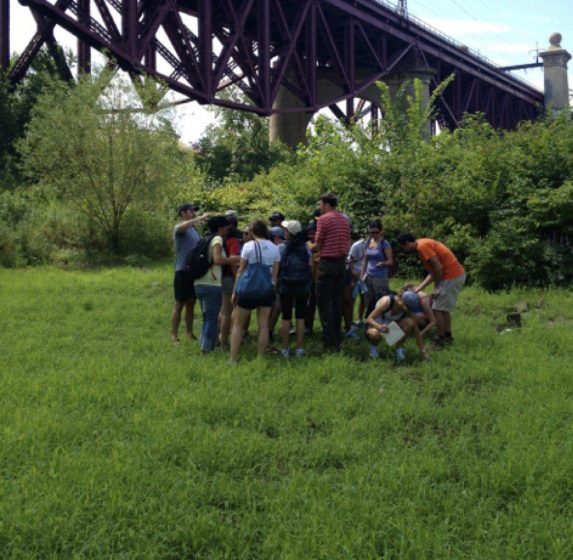
Awareness fosters care
In a world of advancing urbanization, urban environmental education can play a key role. The story of cities as ecological spaces needs to be told, both in cities and outside them: to adults and to the many young people who increasingly populate the world’s growing cities; to our leaders in government, business,and civil society making decisions about the built and natural environment; and to each other in our daily lives. Such stories will have a critical impact on the willingness of the inhabitants of the cities of the future to protect and care for—and create—their urban environments.
Thought leaders and educators can communicate a clearer connection between the urban environment and human and global environmental health: that merely recording the presence of species in urban environments does not necessarily indicate their health; that actions such as the increased use of pesticides and the planting of new hybrids and exotic species may deprive native fauna of feeding and nesting habitats; that the persistence of many species in urban environments, such as macaques, langurs, and birds of prey in Indian cities, can be attributed to cultural traditions of good-will towards life; that local food production with diverse methods is central to local health; that all people, not just the rich, deserve access to ecosystem services; that consumption and transportation choices are key to global sustainability; and that there is a connection between green urban design and resilience, sustainability, livability, and justice.
Urban environmental education can play a pivotal role in telling these stories by teaching about urban biodiversity, ecosystem services, and nature, of which most urban residents are too little aware. Urban environmental education that is sensitive to its local cultural context and incorporates advanced scientific insights from urban social-ecology can make a significant difference, encouraging residents to care about their environment and giving them the knowledge on which to act.
The dire challenges of urban environmental pollution and degradation—and their relevance to resilience, sustainability, livability, and justice—can quickly lead to the trap of purely dismal narratives. This does not have to be the case. In addition to a narrative of ecological loss and the consequences for human well-being, we can develop and communicate positive messages of real change that simultaneously convey facts, challenges, and potential solutions. We must emphasize the importance of ecological and technical solutions, while also addressing the social challenges of equity, conflict, and exclusion (which are often much harder to deal with).
Thus, while focusing on the “what” questions relating to outcomes—such as ecological and environmental improvement—a philosophy of urban environmental education can equally focus on the “how” questions of process, helping people to understand the ways in which social change can be initiated and inclusively scaled up in their own cities and social-ecological contexts. In this regard, urban environmental education can elevate itself to play the key influential role that only it can fill: helping to creatively re-conceptualize, re-design, and re-develop existing and emerging cities by educating people about green infrastructure, influencing urban planning, and changing human environmental behavior.
Conclusion
Urban environmental education in an emerging urban world faces multiple challenges. Is there a uniquely urban version of environmental education? To a large extent, that is a subject for this book. We know that some established environmental assumptions must be adjusted in a modern urban context: that nature can only be found the wilderness; that cities are the enemy of sustainability; that cities are ecologically barren; that city people don’t engage with nature. All are largely false, or misleading.
How can we create a vision for advancing urbanism that serves people and our planet, a vision that is fundamentally imbued with values? Tell the story, far and wide, that cities are essential hotspots of nature that serve people and the Earth. There is nature in cities, and it needs to be seeded, grown, and nurtured as a commons. These are stories that must be told in our communities: to students, to teachers, to leaders, and to each other. This is the key and essential role—advancing progressive urban environmental ideas in a global context—for an emerging urban environmental education. Telling this critical story is the challenge to which environmental education is called in the urban 21st century.
David Maddox, New York
Harini Nagendra, Bangalore
Thomas Elmqvist, Stockholm
Alex Russ, Ithaca
* * * * *
This essay will appear as a chapter in Urban Environmental Education Review, edited by Alex Russ and Marianne Krasny, to be published by Cornell University Press in 2017. To see more pre-release chapters from the book, click here.
This essay also appears at the North American Association of Environmental Educators site
References
- Aronson, M.F.J., La Sorte, F. A., Nilon, C.H. et al. (2014). A global analysis of the impacts of urbanization on bird and plant diversity reveals key anthropogenic drivers. Proceedings of the Royal Society B, 281.
- Beninde, J., Veith, M. and Hochkirch, A. (2015). Biodiversity in cities needs space: A meta‐analysis of factors determining intra‐urban biodiversity variation. Ecology Letters, 18(6), 581-592.
- Elmqvist, T., Fragkias, M., Goodness, J., Güneralp, B., et al. (2013). Stewardship of the biosphere in the urban era. In Elmqvist, Fragkias, M., Goodness, J., Güneralp, B., et al. (Eds). Urbanization, biodiversity and ecosystem services: Challenges and opportunities: A global assessment (pp. 719-746). Dordrecht: Springer.
- Faeth, S.H., Bang, C., and Saari, S. (2014). Urban biodiversity: Patterns and mechanisms. Annals of the New York Academy of Sciences, 1223: 69-81.
- Kazemi, F., Beecham, S., and Gibbs, J. (2011). Streetscape biodiversity and the role of bioretention swales in an Australian urban environment. Landscape and Urban Planning, 101(2), 139-148.
- Seto, K., Güneralp, B., and L.R. Hutyra (2012). Global forecasts of urban expansion to 2030 and direct impacts on biodiversity and carbon pools. Proceedings of the National Academy of Science, 109(40), 16093-16088.
- Svendsen, E.S., Campbell, L.K., and McMillen, H. (2016, in press). Stories, shrines, and symbols: Recognizing psycho-social-spiritual benefits of urban parks and natural areas. Journal of Ethnobiology.
- United Nations. (2015). Sustainable development goals.
- Wolch, J.R., Byrne, J., and Newell, J.P. (2014). Urban green space, public health, and environmental justice: The challenge of making cities ‘just green enough.’ Landscape and Urban Planning, 125: 234-244.
about the writer
Harini Nagendra
Harini Nagendra is a Professor of Sustainability at Azim Premji University, Bangalore, India. She uses social and ecological approaches to examine the factors shaping the sustainability of forests and cities in the south Asian context. Her books include “Cities and Canopies: Trees of Indian Cities” and "Shades of Blue: Connecting the Drops in India's Cities" (Penguin India, 2023) (with Seema Mundoli), and “The Bangalore Detectives Club” historical mystery series set in 1920s colonial India.
about the writer
Thomas Elmqvist
Thomas Elmqvist is a professor in Natural Resource Management at Stockholm University and Theme Leader at the Stockholm Resilience Center. His research is on ecosystem services, land use change, natural disturbances and components of resilience including the role of social institutions.
about the writer
Alex Russ
Alex Kudryavtsev (pen name: Alex Russ) is an online course instructor for EECapacity, an EPA-funded environment educator training project led by Cornell University and NAAEE.

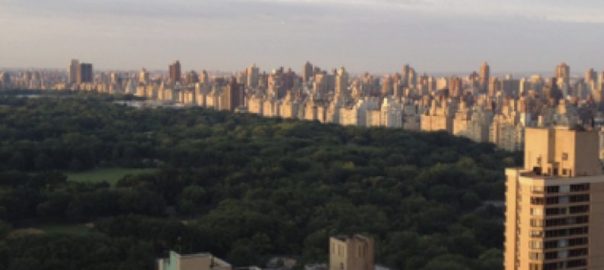






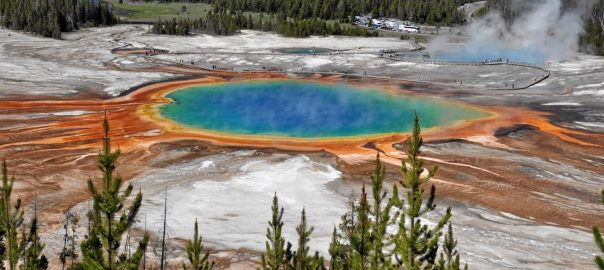
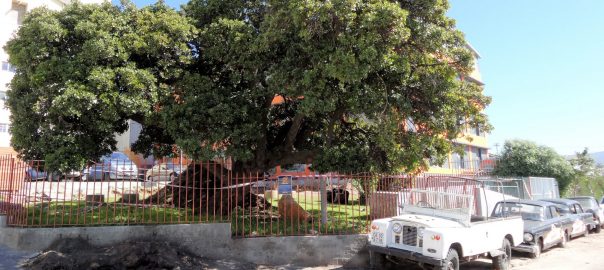
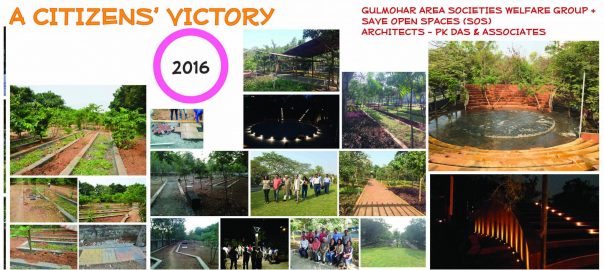
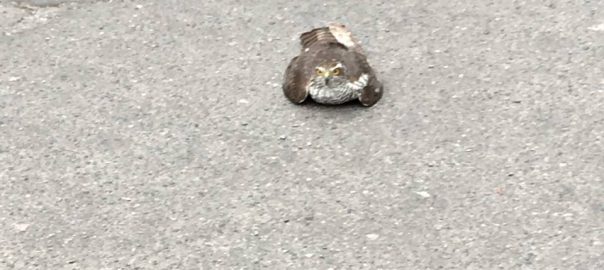
Comprehensive, excellent. I’ll give it a lot more thought.
Digital disruption, changing the content of children’s education – these are our daily fare
here in Australia. Hard to get up any discussion along the lines:’hang on a minute’, what are we really on about in terms of values., nature-consciousness….
Best wishes to N/C